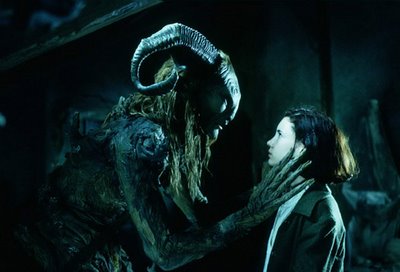Francis Thompson
In No Strange Land
The kingdom of God is within you
O world invisible, we view thee,
O world intangible, we touch thee,
O world unknowable, we know thee,
Inapprehensible, we clutch thee!
Does the fish soar to find the ocean,
The eagle plunge to find the air--
That we ask of the stars in motion
If they have rumor of thee there?
Not where the wheeling systems darken,
And our benumbed conceiving soars!--
The drift of pinions, would we hearken,
Beats at our own clay-shuttered doors.
The angels keep their ancient places--
Turn but a stone and start a wing!
'Tis ye, 'tis your estrangèd faces,
That miss the many-splendored thing.
But (when so sad thou canst not sadder)
Cry--and upon thy so sore loss
Shall shine the traffic of Jacob's ladder
Pitched betwixt Heaven and Charing Cross.
Yea, in the night, my Soul, my daughter,
Cry--clinging to Heaven by the hems;
And lo, Christ walking on the water,
Not of Genesareth, but Thames!
***
Francis Thompson (December 18, 1859 – November 13, 1907) was an English poet and ascetic. After attending college, he moved to London to become a writer, but in menial work, became addicted to opium, and was a street vagrant for years. A married couple read his poetry and rescued him, publishing his first book, Poems in 1893. Francis Thompson lived as an unbalanced invalid in Wales and at Storrington, but wrote over 3 books of poetry, with other works and essays, before dying of tuberculosis in 1907 .... - read more about him at Wikipedia
***
Below are some excerpts from the America article The Poet of the Return to God by Patricia Schnapp, R.S.M. ...
****************************
Thompson has largely been consigned to moldering books on unused library shelves. Today’s readers probably find him too Byzantine and archaic. Yet since 2007 is the centenary year of Thompson’s death at age 47, it seems an appropriate time to reconsider this talented and tragic minstrel. For one thing, his “Hound of Heaven” is one of the great religious odes of modern times, having been praised by such diverse writers as Oscar Wilde, G. K. Chesterton, Eugene O’Neill and James Dickey. For another, his poetry, sensuous and lush as it is, radiates a profound Catholic spirituality. Thompson’s work illustrates the power of a religious vision to permeate the consciousness so intimately that it transforms the natural world into a realm of allegory, symbol and metaphor ....
Thompson’s poetic sensibilities were largely shaped by the great Romantics, especially Shelley, whom he deeply admired. And with Shelley, Thompson shared not just an obvious love of nature, but an intensity of emotion as well, which gave his poetry a sense of breathless urgency.
This intensity resulted at least partly from Thompson’s struggle with ill health (and his consequent addiction to laudanum) from his late 20’s until his death. Thompson also lived with the abiding sense that his unique talent had itself in some way effected a double failure in his life; he had left the seminary at Ushaw with his father’s hopes of a priestly life for him frustrated, and he had failed in the final examinations at medical school ....
In Thompson’s mission to harmonize the worlds of nature and religious faith, he frequently returns to his favorite source of metaphor and allegory—the sun. This is not surprising, for it had been the sun that occasioned in him a profound religious experience while staying in a monastery in 1888 to recover from opium addiction. Standing before a life-size crucifix in a field, Thompson watched the extraordinary beauty of the setting sun and felt a rebirth within himself of both his poetic gifts and his relationship with Christ. At the same time, he recognized in the setting sun and its promise of rebirth a mystical symbol of Christ’s death and resurrection. Consequently, the sun became the supreme symbol in the world of Thompson’s poetry, as it is the supreme material force in the world.
This inexhaustible warehouse of imagery for Thompson reflects the great mystery of his faith, as when he writes in “Ode to the Setting Sun”:
Thou dost image, thou dost follow
That King-Maker of Creation...
Thou art of Him a type memorial ...
And in this centenary year of his death, Catholics everywhere, but especially in the English-speaking world, should take the occasion to revisit and celebrate the poetry of Francis Thompson. For, as Joseph Husslein wrote in the introduction to Terence Connolly’s 1944 biography of Thompson, “His spirit knocked at heaven’s gate….”
************************************
Read more of Thompon's poems here
















